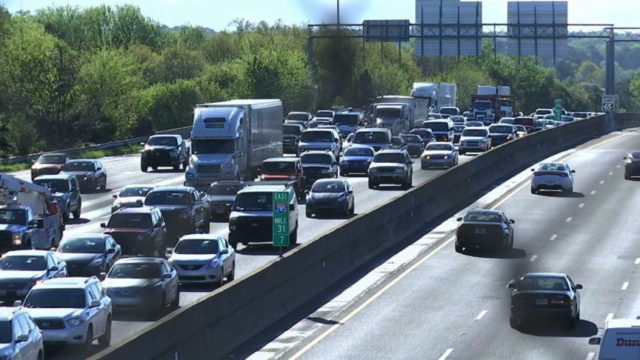President Donald Trump’s $1.5 trillion infrastructure plan to be released on Monday should shorten permitting processes, invest in rural infrastructure, and train workers for the jobs produced in the process of improving America’s infrastructure.
The $1.5 trillion cost of the new plan would come from a proposed incentives package and enhance federal loan programs, according to a senior administration official who briefed reporters on Saturday. Two hundred billion of that would be federal funds, 100 billion of which would go toward incentives. The federal government will offer matching funds to state and local governments spending on infrastructure.
“The President’s vision is to have a permanent fix for the problems that plague us in terms of under-investing and the length of the permitting process,” said the official who commented that the can has been kicked down the road for the past “couple of decades.”
The official explained that “virtually 100 percent of major infrastructure in the U.S. requires some form of federal permitting,” but the federal government funds just about 14 percent of infrastructure costs, and owns an even smaller percentage. The remaining 86 percent of the funding comes from state and local governments and the private sector.
The infrastructure plan set to be released on Monday has four objectives, according to the official:
“Stimulate $1.5 trillion in new investment and infrastructure … shorted the permitting process into two years … invest in rural infrastructure, and … making improvements in training our workforce so Americans are prepared to take advantage of the jobs that will be created as we build out and improve our workforce.”
The official stated that American taxpayers’ preference on funding the infrastructure that they pay for, is to “invest locally as opposed to sending money to Washington.”
Fifty billion included in the plan would fund rural infrastructure. This program would block grant funds to governors who could then decide which infrastructure projects to prioritize in that state.
Twenty billion would go toward “transformative programs.” These are programs that don’t simply patch current infrastructure but invest in “next-century-type” infrastructure projects.
Ten billion requested would be put into a capital financing fund “to actually fund the office-building infrastructure that the federal government is building currently,” according to the official.
The workforce training funding would go toward “removing obstacles and disincentives for people who don’t want to go to a four-year college, and prefer to move in some type of trade, by expanding Pell eligibility, changing the license requirements, and adding more flexibility.”
The official referenced the President’s State of the Union address when moving to discuss issues with the environmental permitting process, “It’s focused more on preparing for litigation and building up massive documents.” A new, streamlined process termed “One Agency, One Decision,” would cut approval down to 21 months with permitting to be completed within three months after that.
A senior administration official added that DJ Gribbin, Gary Cohn, the team at the NEC, and White House Office of Legislative Affairs have all worked on the infrastructure issue. Over the past year, the President’s team has met with both Republican and Democrat members and staff, “incorporating their feedback to ensure that the principles we’re presenting on Monday have the best chance for success.”
One senior administration official said that President Trump and his Cabinet will be traveling across the nation to sell the infrastructure plan. One aspect of the plan to be highlighted is improvements at the nation’s airports. The official added that they are working to make sure that they do not engage in “project-picking.” The President is expected to highlight state and local governments that have already taken steps and to ”highlight them and hold them up, and show them as examples of things that we would like to see more of, and how this plan will enable more of those types of projects to find success.”
Follow Michelle Moons on Twitter @MichelleDiana

COMMENTS
Please let us know if you're having issues with commenting.